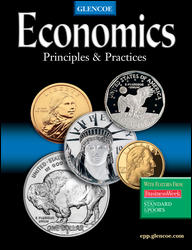
Economics Principles & PracticesChapter 7: Market StructuresChapter OverviewsCompetitive markets represent an ideal situation not always found in the economy. This chapter describes other market structures, and explains how the government's role has evolved to help maintain competition. Section 1 introduces the ideal of perfect competition which is based on large numbers of buyers and sellers, identical products, independent action by market participants, reasonably good information about market conditions, and the freedom to enter or leave the market. Imperfect competition occurs when any of the conditions for perfect competition are not met. There are three forms of imperfect competition: monopolistic competition, which has all the characteristics of perfect competition except for product differentiation; oligopoly, which is a market structure dominated by a few very large firms; and monopoly, which is a single producer with the most control over supply and price. All profit-maximizing firms, regardless of their market structure, maximize profits by equating the marginal cost of production with the marginal revenue from sales. Section 2 describes five common forms of market failures. The first is inadequate competition, which can lead to oligopolies or monopolies. The second is inadequate information, which denies people an awareness of better prices or opportunities in other markets. The third is resource immobility, which occurs when factors of production cannot or refuse to move to other markets. The fourth is the presence of externalities, positive or negative economic side effects to uninvolved third parties. The fifth is the failure of the market to provide public goods. Section 3 explains how the role of government has expanded to preserve competitive markets. This has taken the form of antitrust legislation that outlaws trusts and various forms of price discrimination. Outright regulation, cease and desist orders, and requirements for public disclosure are also used. As a result, the economy has been modified so that it is now a mixture of different market structures, different forms of business organizations, and some degree of government regulation. |  |















